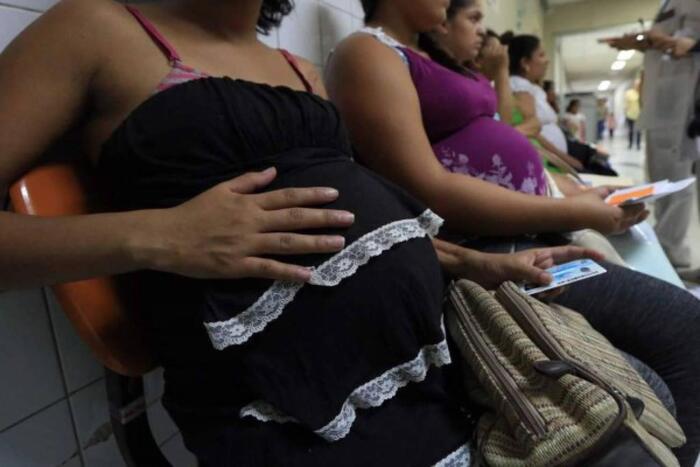The recent elections in La Rioja, Misiones, Jujuy, Salta, La Pampa, Tierra del Fuego, Rio Negro and Neuquén have given rise to a comment that is invariably repeated: in those eight small districts, the ruling parties are indeed winning. I have highlighted this fact during these forty years of democracy; From so much repeating, it is marking a trend that affects the republican principle of alternation between government and opposition.
Two indicators describe this phenomenon: the unlimited re-election of governors established by provincial constitutions (three provinces have this rule) and the dominance of a hegemonic party within which different governors rotate.
If the first case exposes situations challenged before the Supreme Court (for example in Tucumán and San Juan), the second is identified with Justicialism and with groups with local roots, and also responds to opaque electoral rules such as the slogan law.
In this way, a map characterized by the extremes is formed. At one end of the territory stands out the demographic excessiveness of the province of Buenos Aires, in which the Justicialist predominance in these forty years opened passed to only two periods in the hands of the opposition; in the other, planted by these small districts, the hegemony of the ruling parties stands out.
This phenomenon has antecedents. In the nineteenth century there was pejoratively talk of "provincial oligarchies" mounted on a strict control of suffrage.
At present, this control derives from a more subtle management of electoral clientelism based on public employment and subsidies. In these eight provinces, public employment is a major factor; Salaries and checks, meager but sufficient to maintain control, gravitate more in these territories than the sphere corresponding to civil society.
This electoral geography should not be analyzed by omitting the links established between the small provinces and the national order. These are overrepresented districts in the Chamber of Deputies with a minimum of five deputies and, as befits the equal representation of the federal pact, three senators.
Thus a range of strong distortions unfolds. La Pampa, Neuquén, Rio Negro, Chubut, Santa Cruz and Tierra del Fuego, with a combined population of more than two million inhabitants, gather thirty deputies, while the province of Santa Fe with just over three million inhabitants, is represented by nineteen deputies.
The lubricant that makes this system work is the federal co-participation regime stipulated by the constitutional reform of 1994. The theory of federalism presupposes that the political autonomy of the provinces corresponds to fiscal autonomy.
This is not the case of this kind of provinces whose budgets come in high percentages from the transfers of the National Government by co-participation. In these eight provinces, except Neuquén for oil royalties, they are higher than 50%. If at the political level these provinces are autonomous, at the fiscal level they are dependent. They consume taxes that they do not produce or produce little.
This is the negative consequence of a distribution of taxes between the Nation and the provinces not regulated by any law. Contrary to the provisions of the sixth transitory clause of the 1994 reform, we are waiting for a Federal Co-participation law that, as ordered, should have been made before 1996. A free stone to the discretion of the State and favoritism towards addicted provinces.
This is the profile of one of the extremes of our federal regime; in the other champion is the Province of Buenos Aires, which carries about 39% of the total population of the country and an equivalent percentage of the electoral roll.
It is understandable then the magnitude of the Buenos Aires power that does not coincide with the fiscal support at such a size nor with the minimum number of deputies that, in quantitative terms, it should have. To overcome these obstacles, the province depends on direct transfers from the National Executive Power, preferably applied to the Buenos Aires suburbs.
With these malformations, the praxis of the federal regime consolidated a lasting territorial coalition led by Justicialism. In this way, the Province of Buenos Aires is complemented by the hegemonic officialdoms in most of the small provinces.
Until proof to the contrary, Justicialism plays on the electoral scene with two masks: one of great size; the other more discreet and no less strategic. Not in vain the party congress is chaired these days by the governor of Formosa who brings together in the exercise of his office two hegemonies, the personal re-election spirit and that of the party.
It will not be easy to overcome this territorial coalition. While in this year's elections the question about who will win the Buenos Aires trophy flies (hence the desperation of Kirchnerism to defend the position) the archipelago of small provinces shows signs of a conservatism more resistant to changes.
Although in those districts the opposition wins in the general election, the governors are still standing well, tactically advancing the provincial elections. They could suffer, yes, a wear and tear in the Senate.
In this arbitrary distribution of resources there are winners and losers. Among the latter, it seeks to raise its head a middle class of provinces located in a strip that starts in the City of Buenos Aires, stretches towards the Litoral and from there extends to Santa Fe, Córdoba and Mendoza.
They are dynamic districts with fiscal capacity, thickness of civil society and experience of alternations, whether long-term as in the CABA or shorter as in Santa Fe, Córdoba and Mendoza. The opposition to Kirchnerism is stronger in these districts, although insufficient if it does not manage to erode that territorial coalition that propped up Justicialism in the course of these four decades.
Natalio R. Botana is a political scientist and historian. Professor Emeritus of the Torcuato Di Tella University.









